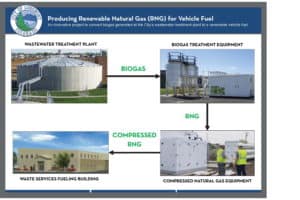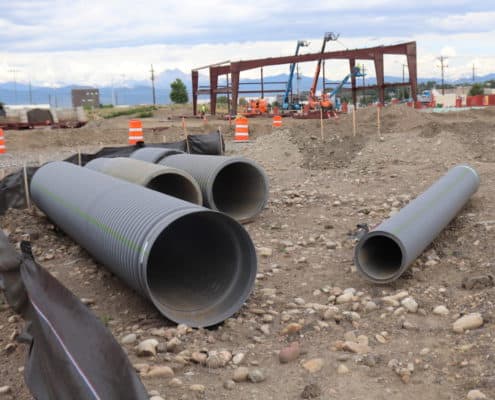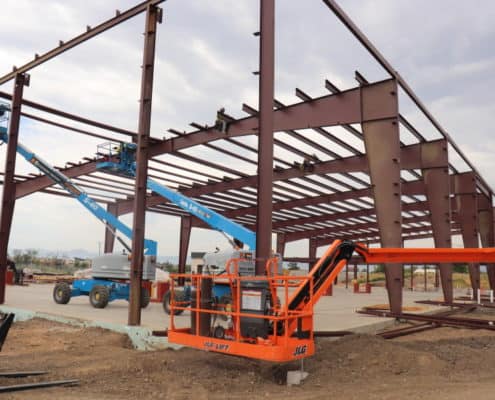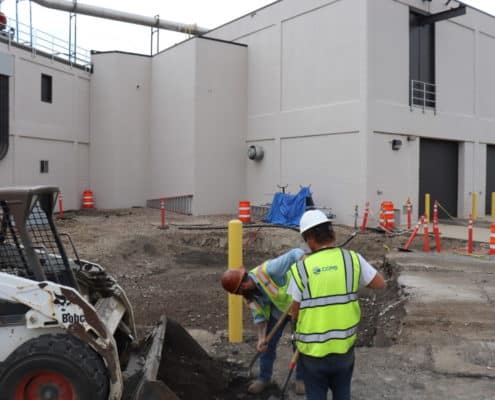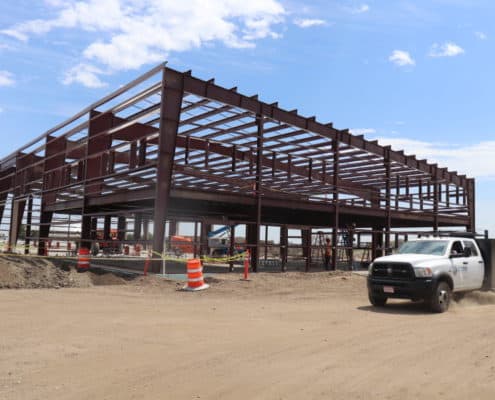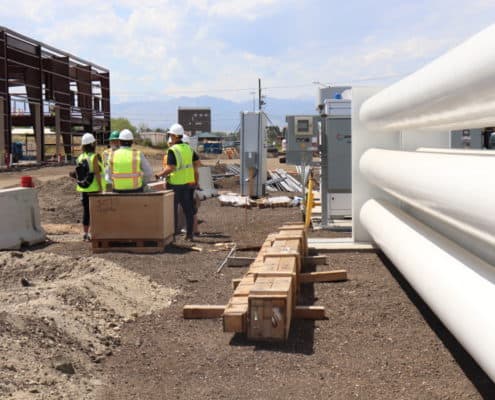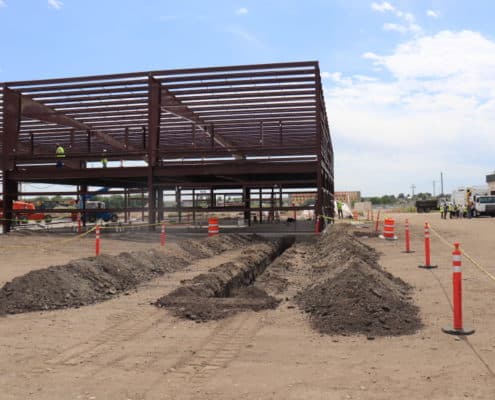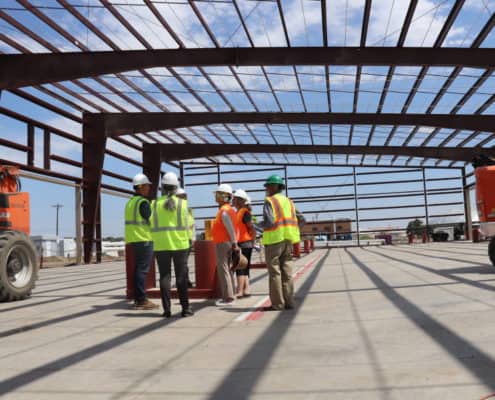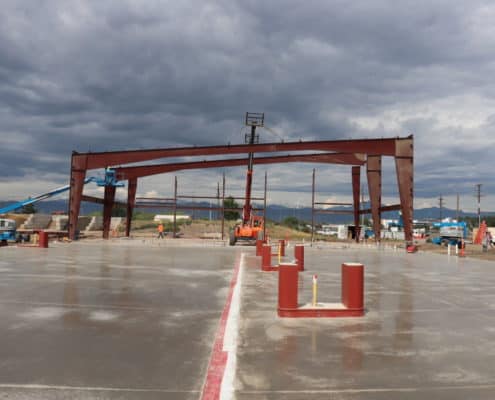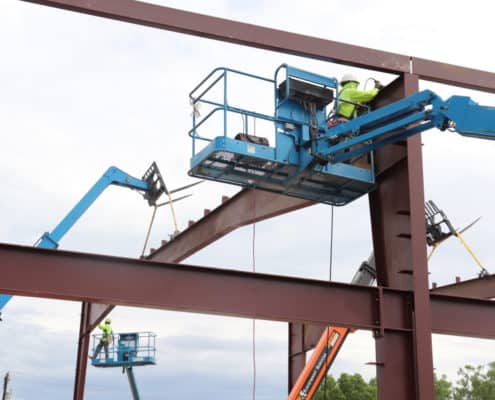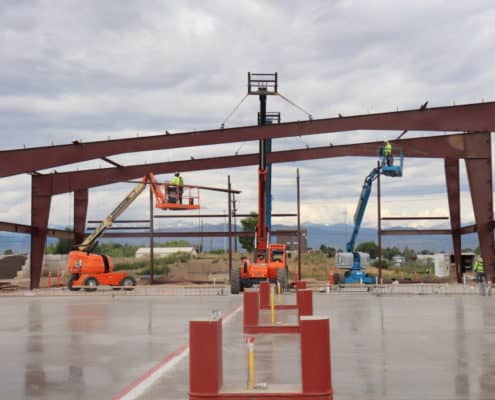Building takes shape as steel rises for Longmont’s RNG project
Do you want to see what the future looks like? Just drive by the northwest corner of the City of Longmont’s Wastewater Treatment Plant (WWTP) off South Martin Street, where 212,000 pounds of steel is rising for the Biogas Treatment and Renewable Natural Gas (RNG) Fueling Station Project. The project will transform byproducts from the WWTP into renewable fuel for the City’s trash trucks.
The steel is a frame for an approximately 23,000-square-foot building. The front or west-facing side of the building will house approximately 10,000 square feet of City administrative offices on two stories; the remaining 13,000 square feet on the east side will serve as the fueling station. The steel started to go up the week of July 22. The entire process should take four to six weeks.
Longmont City Council members Polly Christensen and Joan Peck and City of Longmont staff were joined by Longmont Times-Call reporter John Fryar for an up-close look at the project’s progress on Aug. 7. A trash truck on display eventually will be housed at the completed facility and fueled by compressed RNG created by equipment on the site. Some took the opportunity to sit in the truck. They also toured the Renewable Natural Gas Fueling Project site and heard more about how the RNG project will benefit the City and its residents.
Before steel erection began, CGRS built 10 fueling islands, poured concrete for the building’s floor and completed the underground plumbing. Next up is building framing and installation of the fire sprinkler system and other internal systems.
CGRS has also begun removing dirt, installing electrical components and pouring concrete slabs for the pad where the biogas treatment equipment will sit at the WWTP. That treatment equipment will convert biogas, a byproduct of the wastewater-treatment process, into compressed Renewable Natural Gas (RNG) for fueling. The biogas treatment equipment is anticipated to arrive on site in November.
Once complete, the RNG pipeline will run from the WWTP to the biogas treatment equipment, through the compressed natural gas equipment, and then into the fueling station.
Check more info here.

